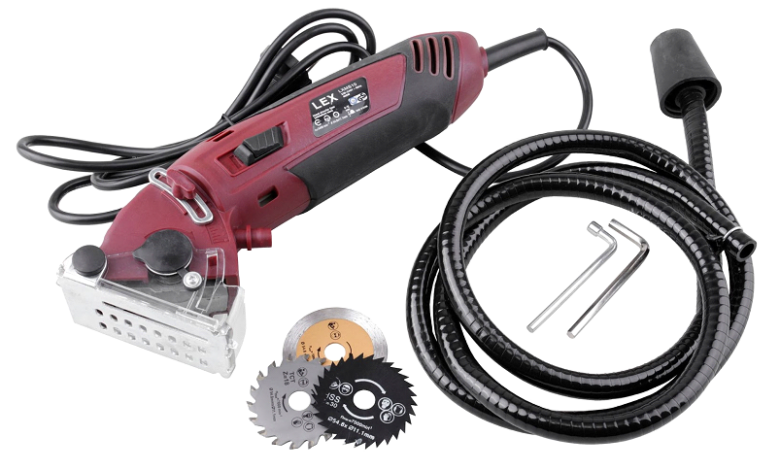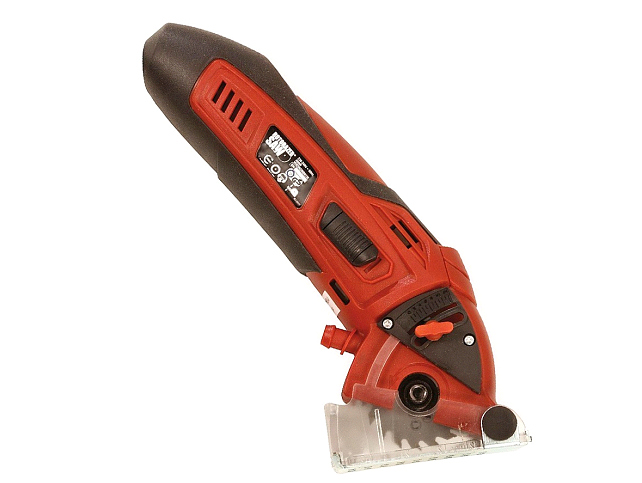
The Rotorazer is a powerful saw that comes with a blade guard and release lever. This saw has virtually unlimited cutting capacity and direction. The saw has a one-year manufacturer warranty and a 30-day money-back guarantee.
It comes with three blades
The Rotorazer saw comes with three cutting-blades that you can change as needed. A tungsten carbide blade is perfect for hard surfaces like hardwood, marble, and PVC, while the diamond blade is great for cutting metals and wood. Each blade can be easily changed for optimal performance. The saw is also equipped with a Dust Extraction system, so you can cut without worry about smudging.
The motor power of the Rotorazer saw is sufficient for many DIY projects. It uses a 120 volt, three-amp motor, which is smaller than many jigsaws. It’s portable and lightweight. And because it comes with three blades, it is easy to store in a toolbox.
The Rotorazer saw is lightweight and easy to use. It comes with three blades with different surfaces. The saw has a 6.75-foot cord and a 5.3-foot hose. It also doesn’t require batteries. Besides being lightweight and compact, the Rotorazer Saw is powerful and has a high-quality motor. So, you don’t need to worry about cutting through wood.
In addition to its price, the Rotorazer saw comes with three blade sets. You can change the blades as needed, which is great for smaller projects, like repairing a fence. It also comes with a two-year warranty.
The Rotorazer saw features three blades for different materials. The diamond blade is best for cutting hard materials like marble and ceramic tile. The tungsten carbide blade makes cutting hardwood easier. Moreover, the tungsten carbide blade makes cutting laminated flooring a breeze. You can also cut pegboard and drywall with the diamond blade. You can use the Tungsten carbide blade for cutting steel and metal.

It is lightweight
If you’re looking for a lightweight circular saw, the Rotorazer is perfect for you. The saw has three blades, including a diamond blade that is perfect for cutting tile, wood, and metal. The tungsten blade is great for cutting wood and PVC, and the steel blade cuts metals and carpet. The saw has a hex wrench for tightening the blades to prevent them from slipping and ripping your work.
The Rotorazer features a 400-watt motor and a construction-grade chassis. The saw’s blade is placed on the left side of the chassis, so you can see where it is cutting. It was first available through direct ordering and later became available at retail stores. Despite the saw’s lightweight design, customers have said that the dust collection features are particularly useful.
The Rotorazer saw is also highly portable and comes with a hard storage case. Its blades can be used to cut in any direction, unlike a traditional circular saw. Its blades can be used for both horizontal and vertical cuts, and the saw can even cut through hard-to-reach areas. And because it is lightweight and has enough power for average DIY projects, the Rotorazer is a great choice for DIYers.
The Rotorazer saw is an electric mini circular saw that is ideal for DIY projects. With its compact design, the Rotorazer is easy to use and convenient. The lightweight saw blade is four-1/2 inches in length and can cut through wood, soft metal, tile, drywall, and plastic. Its compact size and lightweight design also make it a convenient choice for tight spaces. Its blades are a combination of 7 different types, and the saw is made to last for years.
Unlike other circular saws, the Rotorazer is easy to carry around and store. It’s a good option for smaller projects and for weekend DIYers. The saw has a 360-watt motor, which is plenty for small projects.
It has a dust extraction system
This compact hand tool has a robust motor that can cut through various materials like hardwood and marble. The saw is very portable and also features an advanced dust extraction system. Its three interchangeable blades are durable and effective. You can adjust the depth lever and power switch to suit the material that you are cutting. For more versatility, you can use it for a variety of projects. You can use it for construction projects, arts and crafts, and even home renovations.

This high-powered hand saw can handle any cutting job. It is compact and has a powerful 400-watt motor, allowing for precision cuts in different materials. Dust extraction is easy with the saw’s dust collector, and it can be stored in a toolbox to be easily carried to other work sites. The dust collection system will help you prevent the saw from causing more problems than it solves.
The dust extraction system is especially useful when working in close quarters. Because the blade is almost entirely enclosed in the saw’s body, there is less airborne dust. When the blade is cut, a dust extraction hose or vacuum cleaner can be attached to the blade guard. This makes the process of cleaning the tools easier. The system is also safe for long-term use. And because the blade is protected by a blade guard, you will have a clear line of vision while cutting.








